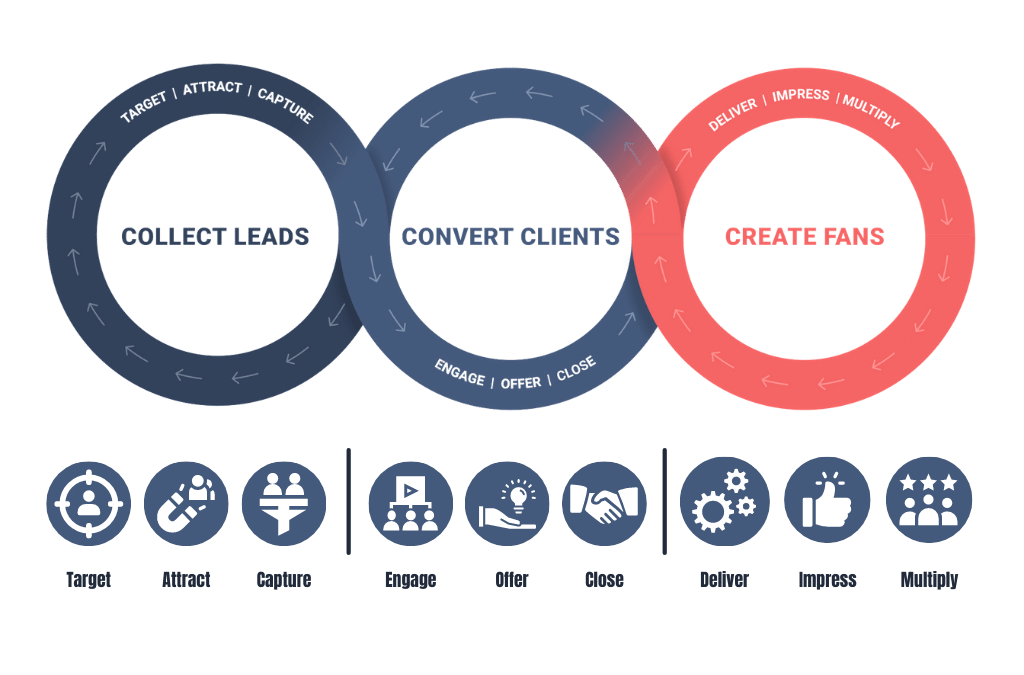
That’s where lifecycle marketing comes in.
The Lifecycle Marketing Model
Lifecycle marketing (or customer lifecycle marketing), is a marketing model that encompasses all strategies used by businesses to establish and sustain engagement as prospects eventually become customers.
Lifecycle marketing is your best approach to achieve that boost in conversion and customer retention. Just make sure to be aware of the specific best practices for your specific industry.
Lifecycle Marketing and Automation
In lifecycle marketing, engagement is driven by automation. This means that most manual tasks and process pertaining to lead generation, lead nurturing, customer service, retargeting, and the like are no longer done manually. This saves you and your team from boredom and potentially embarrassing mistakes, among other things brought on by having to repetitively perform simple tasks.
With automation, your engagement strategy gets much-needed reinforcement from the following:
- Automated email marketing (e.g., welcome, nurture and win-back sequences
- Display ad retargeting (e.g., via Google Ads Display Network remarketing)
- On-site personalization recommending next best-product, promos and offer, or content to convert
- Social media retargeting available on Facebook, Instagram, Twitter, and LinkedIn
That is not to say that lifecycle marketing is fiercely anti-traditional. As a matter of fact, engagement, especially for mortgage brokers, is still facilitated and sustained thanks in no small part to traditional methods like direct mail or phone calls, especially since mortgage businesses thrive on relationships and well-established and well-maintained networks.

How Lifecycle Marketing Differs from ol’ AIDA and the Sales Funnel
The old model AIDA (awareness, interest, desire, action) was developed by E. St. Elmo Lewis in 1898. Each stage in AIDA is designed to influence and lead to the next stage. By 1924, idea of the sales funnel was introduced, thanks to the book Bond Salesmanship by William Townsend, who wrote about “forcing by compression of a broad and general concept of facts through a funnel which produces the specific and favorable consideration of one fact.”
https://babel.hathitrust.org/cgi/pt?id=uc1.$b37470&view=1up&seq=131&q1=forcing%20by%20compression
AIDA and the sales funnel involve a linear approach.
On the other hand, lifecycle marketing is a cyclical and regenerative model. It is designed around the fact that consumers are on a journey and go through buying cycles.
Lifecycle marketing involves 3 main stages that are further divided into 3:
- COLLECT LEADS
- Target
- Attract
- Capture
- CONVERT CLIENTS
- Engage
- Offer
- Close
- CREATE FANS
- Deliver
- Impress
- Multiply
What does this mean for your mortgage business?
It means you have to be a part of your clients’ respective journeys, starting from first contact, when they’re still just contacts or prospects. You don’t say good-bye after you help them get the best mortgage deal possible (yes, we know you will not stop at anything less), and you definitely don’t stay silent before then. You strengthen your relationship with them so you can give them the best service and all the reason they need to come back to you, as well as tell people about you.
When you adopt the lifecycle marketing model, you are prepared to go all out because you want your clients to be so happy with your work that they turn into fans and ambassadors for your business.
Can you imagine what that will do for your branding, growth, and revenue?
Ready to rethink the old sales funnel and engage like a boss?
Contact LeadsRush today. Let’s work together to design the best strategies for you.

